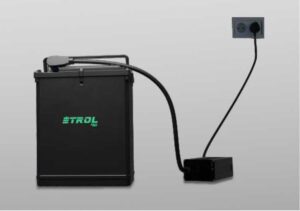Lithium-ion batteries power many of our everyday devices, from smartphones and laptops to electric vehicles. To maximize their lifespan and safety, it is essential to adopt proper care practices. Here’s a detailed guide to keeping your lithium-ion battery in top condition.
📌 Understanding Lithium-Ion Batteries
Lithium-ion batteries operate by moving lithium ions between the anode and cathode during charging and discharging cycles. They are preferred for their high energy density, lightweight design, and long lifespan. However, several factors can impact their performance, including charging habits, temperature, and storage conditions.
✅ Best Practices for Extending Battery Life
1️ Avoid Full Discharges 🔻
Letting a battery drain completely accelerates its degradation. It’s best to recharge before it drops below 20%. Unlike older battery types, partial recharges do not harm lithium-ion batteries.
2️ Don’t Always Charge to 100% 🔋
To maximize battery longevity, keep the charge between 20% and 80%. Frequent full charges can stress the battery cells and shorten their lifespan.
3️ Protect from Extreme Temperatures 🌡️
Lithium-ion batteries don’t tolerate excessive heat or cold. The ideal operating and storage temperature is between 20°C and 25°C. Exposure to temperatures above 35°C or below 0°C can degrade performance and speed up aging.
4️ Store Properly When Not in Use 📦
If storing a battery for an extended period, keep it at around 50% charge in a cool, dry place to minimize long-term capacity loss.
5️ Perform Occasional Maintenance Cycles 🔄
If a battery remains unused for months, conduct a full cycle every 6 to 12 months:
✅ Charge to 100%
✅ Discharge completely
✅ Recharge to 50% before storage
6️ Use the Right Charger ⚡
Always use a manufacturer-approved charger. Incompatible chargers may cause overcharging, overheating, or internal damage.
7️ Avoid Overnight Charging 🌙
Leaving a battery plugged in overnight can lead to overcharging and overheating, reducing its lifespan. Unplug once fully charged.
8️ Monitor Battery Health 🔍
Many devices provide battery diagnostics tools to track battery health. Monitor its capacity and efficiency to detect any decline early.
⚠️ Safety & Precautionary Measures
1️ Watch for Warning Signs 🚨
Be alert for signs of battery failure:
❌ Swelling or deformation
❌ Excessive heat during use or charging
❌ Unusual smells or leakage
If you notice any of these, stop using the battery immediately and seek professional assistance.
2️ Recycle Used Batteries Properly ♻️
Never dispose of lithium-ion batteries in regular trash. They must be recycled at designated collection points to prevent pollution and fire hazards.
3️ Protect from Physical Damage 🔧
A damaged battery from impact or puncture can cause internal short circuits, increasing fire risks. Handle with care.
🔋 Conclusion: Adopt the Right Habits
Following these tips will help optimize the lifespan and performance of your lithium-ion battery, ensuring safe and efficient use of your devices.
💡 A well-maintained battery lasts longer and performs better! 🚀🔋

